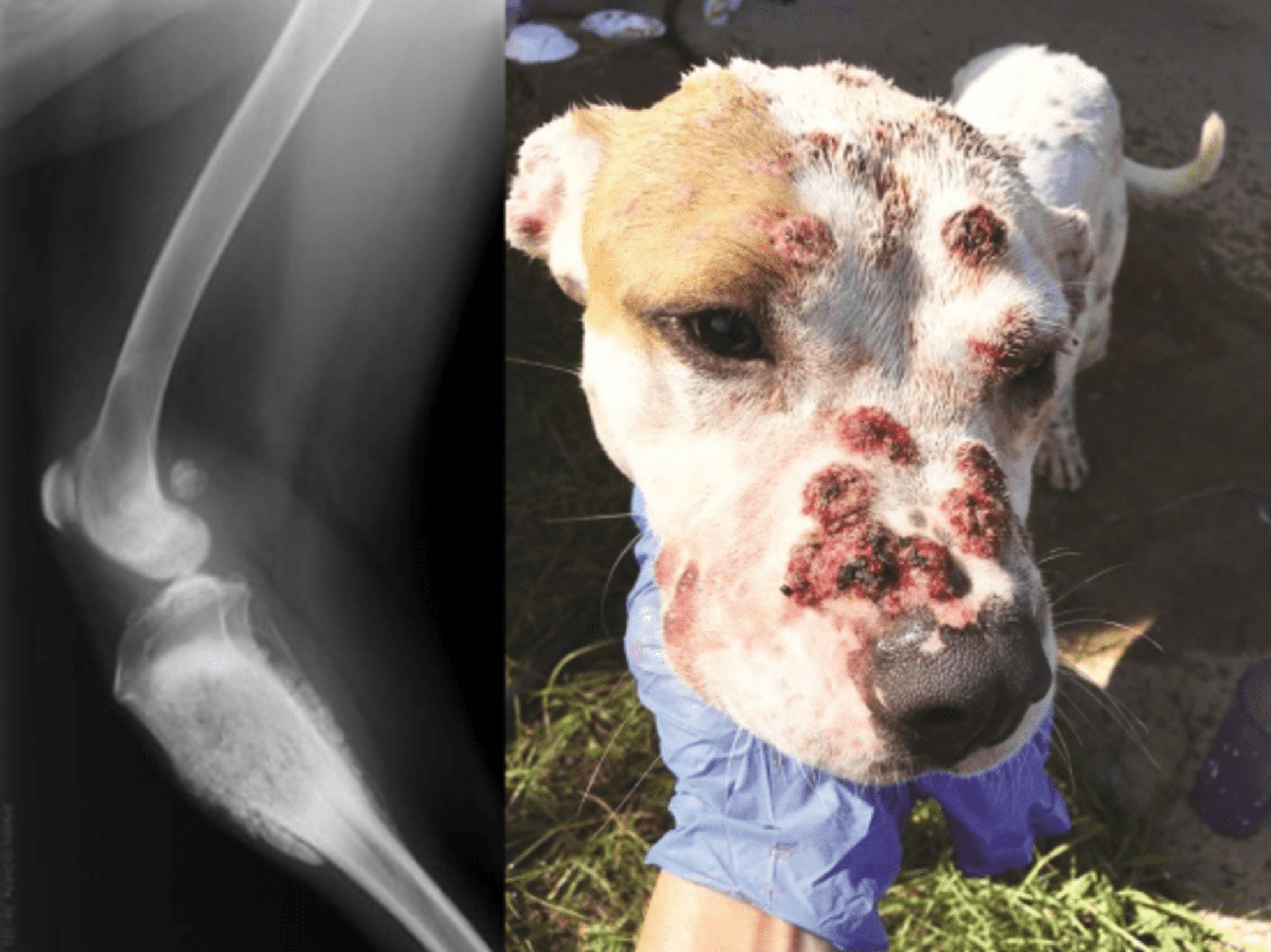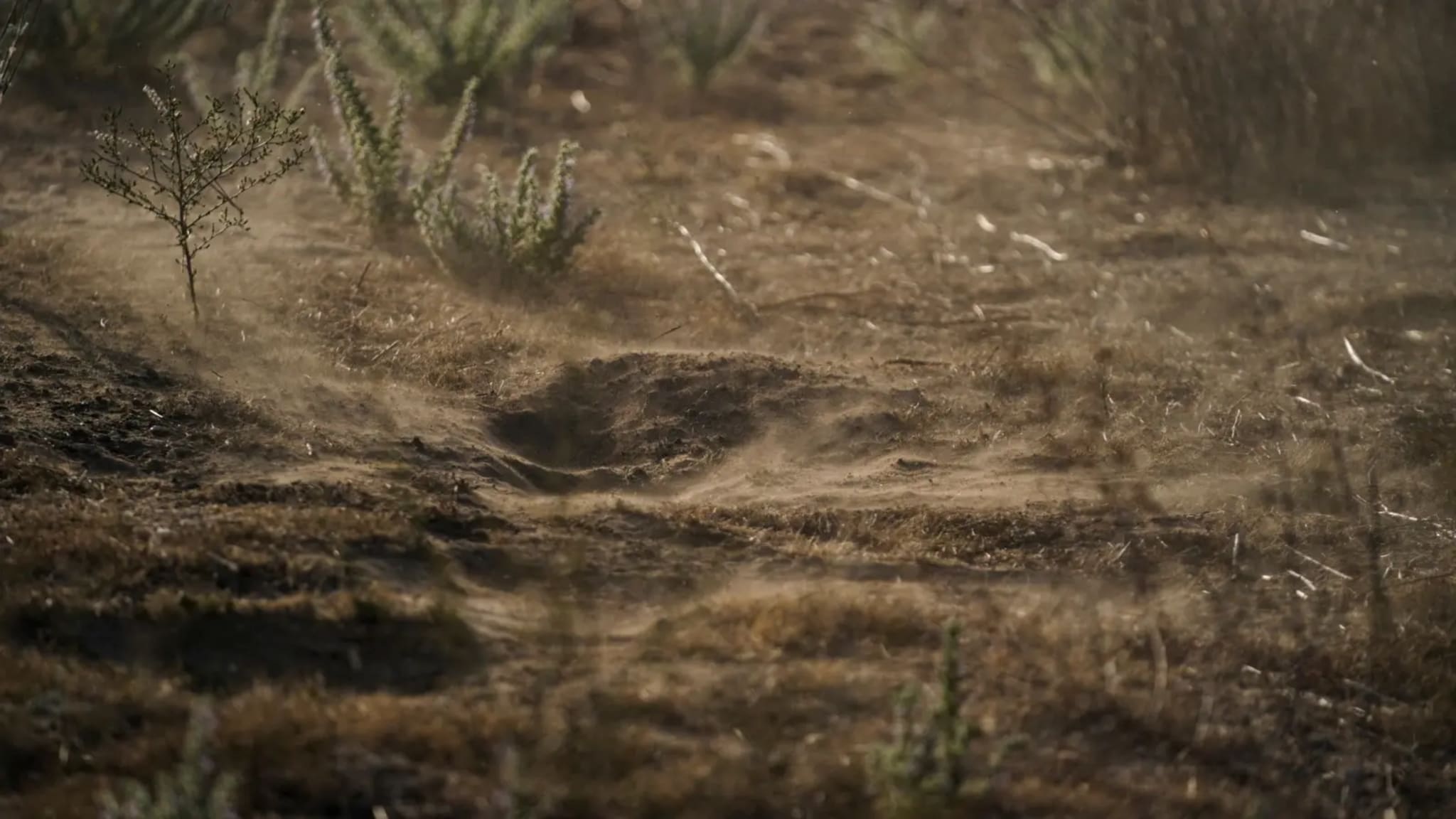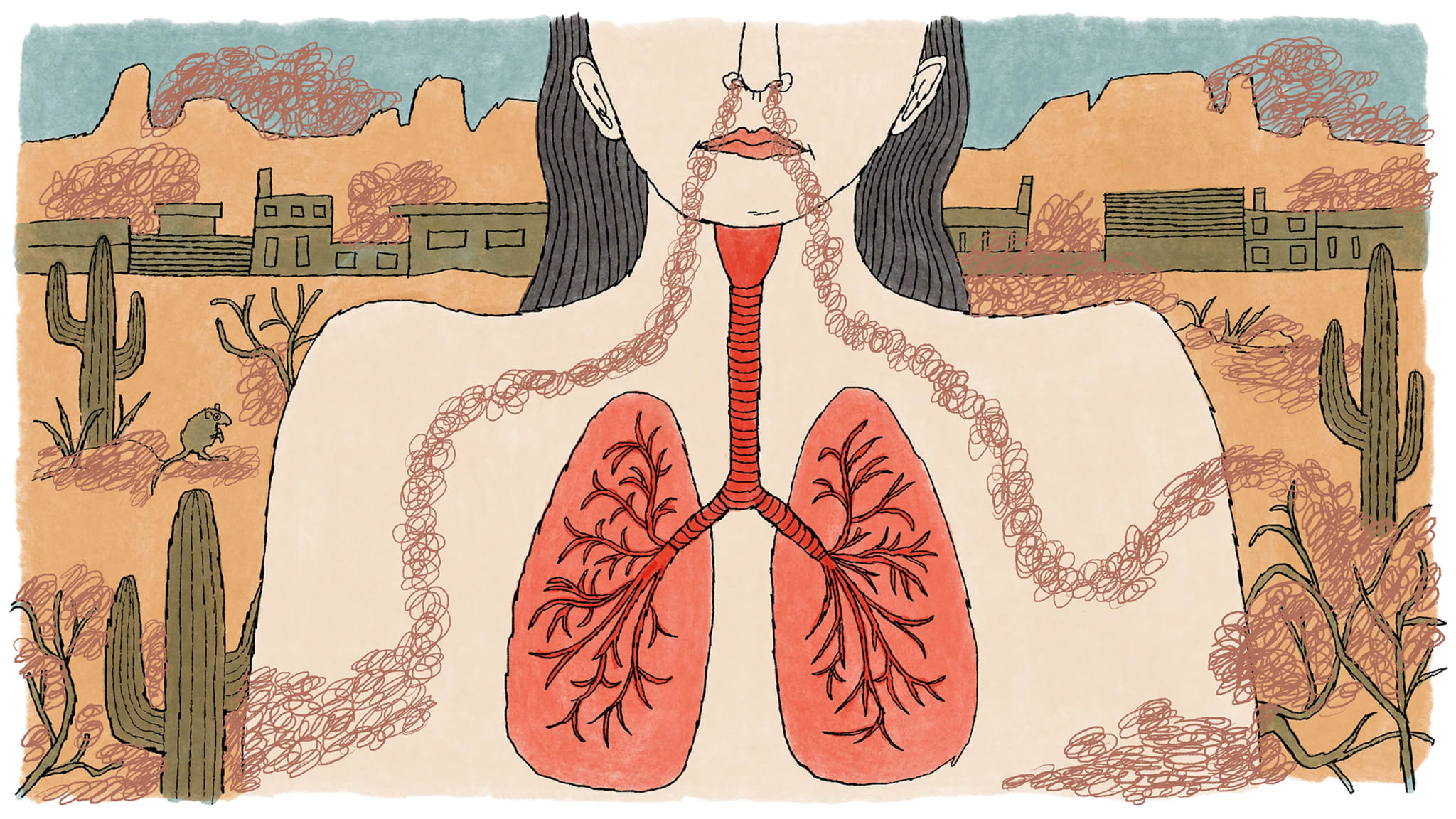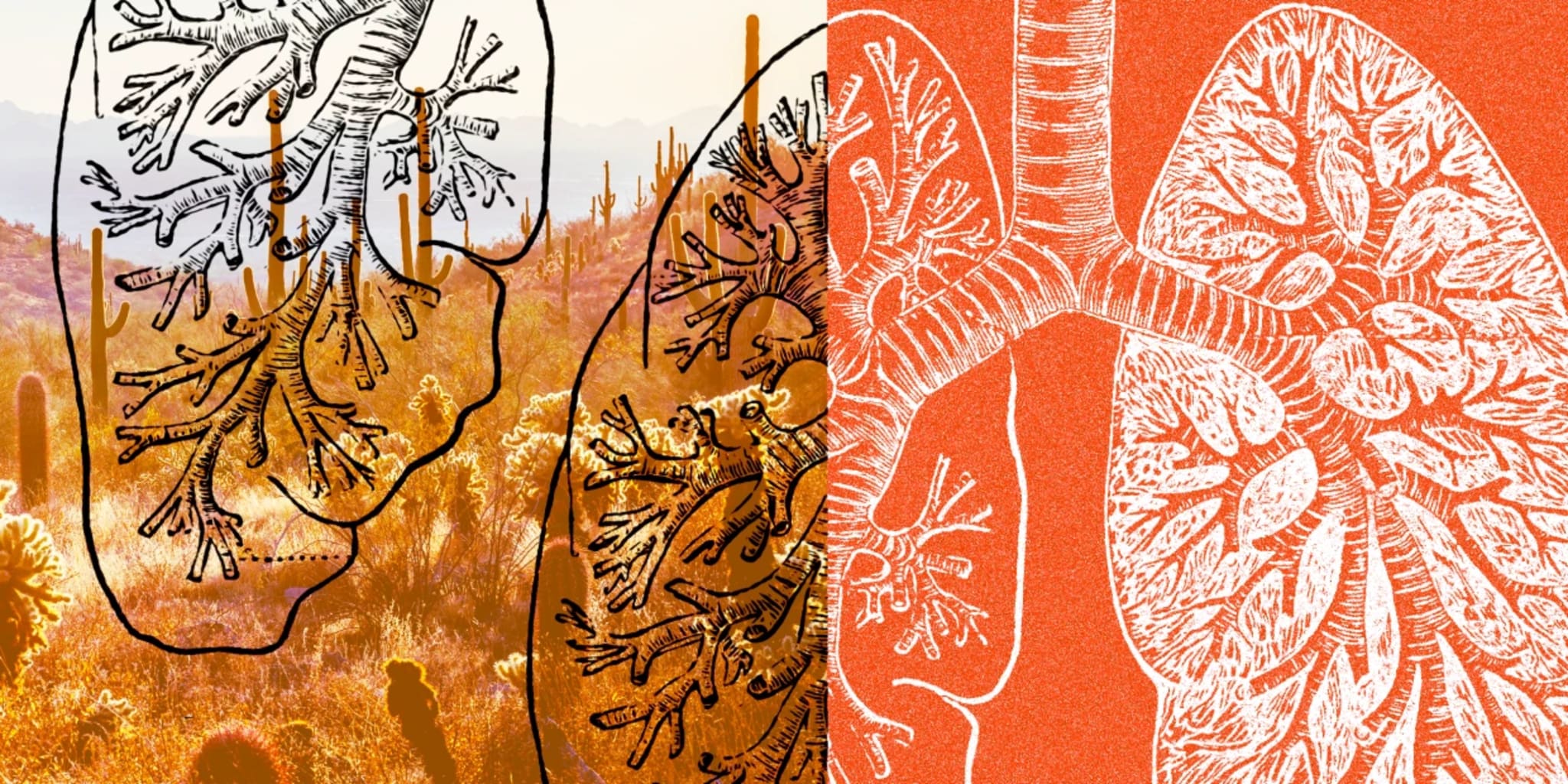
Whether you live or vacation in endemic areas, any mammal who spends time where Valley Fever occurs can become infected by breathing in fungal spores. The fungus infects easily through inhalation and can even make healthy people and animals sick.

Images courtesy of VFCE
What is Valley Fever?
Valley Fever (coccidioidomycosis) is a fungal infection most prevalent in the semi-arid desert regions of the southwestern United States, although the geographic range is expanding. Valley Fever primarily affects the lungs but, especially in dogs, can spread to other areas of the body, such as the bones, eyes, or nervous system.
What causes Valley Fever?


Valley fever is caused by a fungal infection from the Coccidioides fungus, which is found in the soil of arid regions like the southwestern United States, Mexico, and parts of Central and South America. When soil is disturbed, the fungus can become airborne and inhaled, leading to the development of the disease.
Where is Valley Fever found?

Arizona and California desert communities have the highest concentration of cases. Experts predict this geographic area will continue to expand due to climate change and the increasing rate of new building construction which can release spores from the soil.
As of 2021, more than 30 million dogs are at risk of exposure to Valley Fever
Projections based on Expansion of Coccidioidomycosis Endemic Regions in the United States in Response to Climate Change

The Path to a Valley Fever Vaccine
First-in-class Preventive
A potential first-ever vaccine for systemic fungal infections
Gene-deleted Strain
Deletion of disease-causing gene allows for use as a preventative vaccine
Standard Administration
Designed to be given as an injection—the same way dogs receive other vaccines
Vaccine in development not approved
by the FDA or USDA
Valley Fever in the News


‘The Last of Us’ tried to stop a fungus. Here’s what real scientists are doing.


Man versus mycelium: The race to create vaccines against fungal threats


Climate change is hastening valley fever's spread across the American West


Intensifying atmospheric rivers are leading to a surge in Valley fever cases in California


The devil lurking in the dust


Valley fever, historically found only in the Southwest, is spreading. It can have devastating consequences.
Advocating for Pets
4-Time Super Bowl Champion and 5-Time NFL Pro-Bowler Rob Gronkowski, who played college football at the University of Arizona, has seen the impact of Valley Fever in the region. As the proud pet parent to his French Bulldog Ralphie, Gronk is advocating for pets and their owners to have access to affordable and innovative care.



"The more I learned about Anivive, the more I fell in love with their mission. I wanted to be a part of saving pets lives with a company that is making treatments that have never been done before."
Let your voice be heard

Learn more about Valley Fever
Watch one of our live or on-demand lectures and get CE credit.
More from the Valley Fever Experts
An attenuated, live vaccine Δcps1 strain of Coccidioides posadasii






